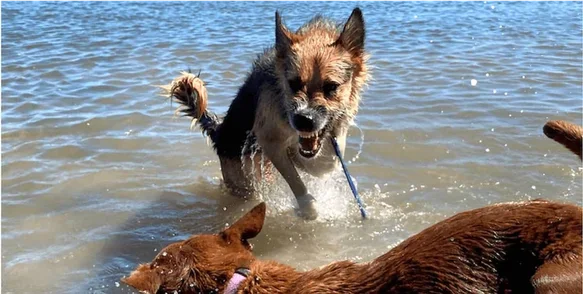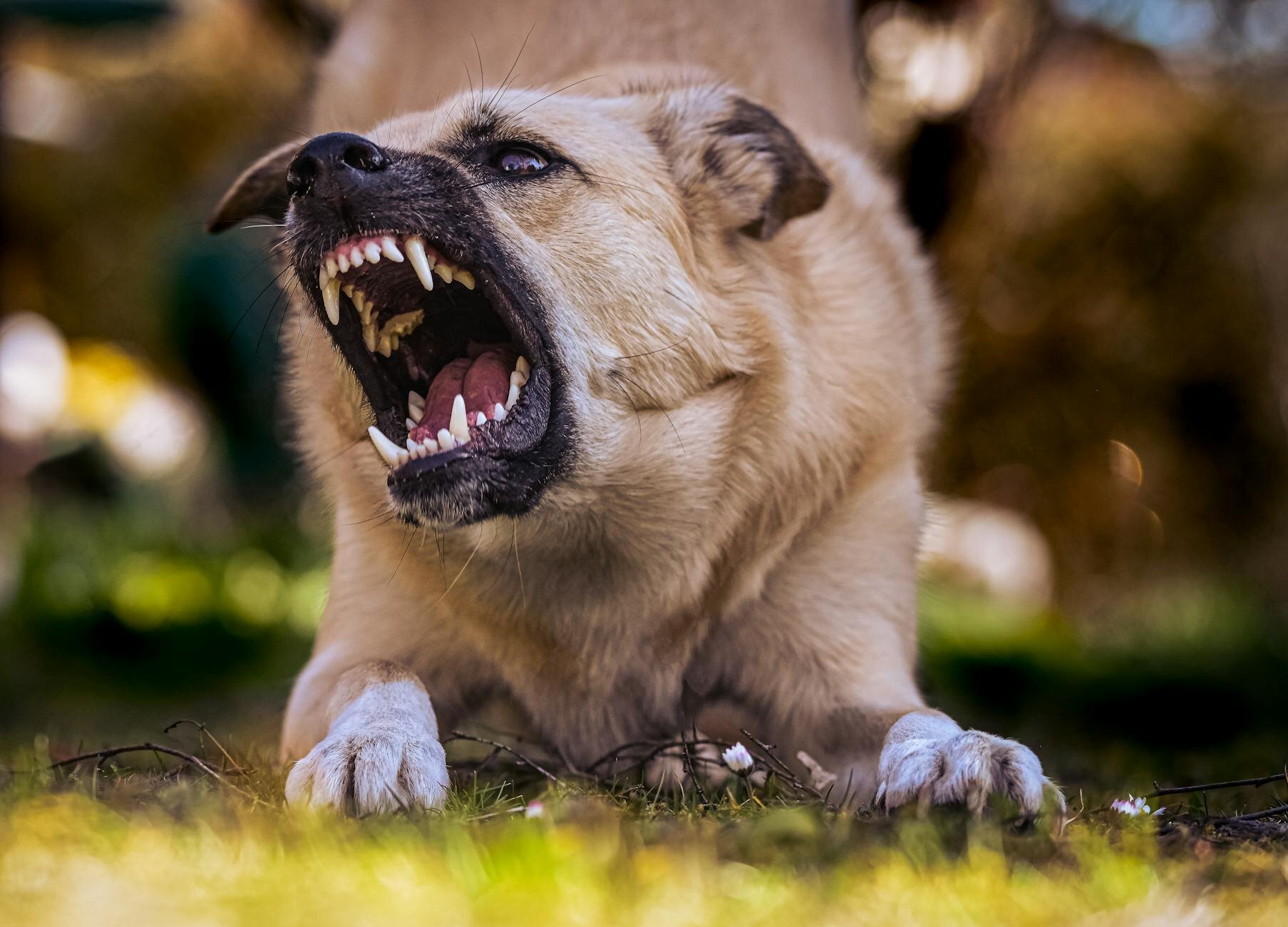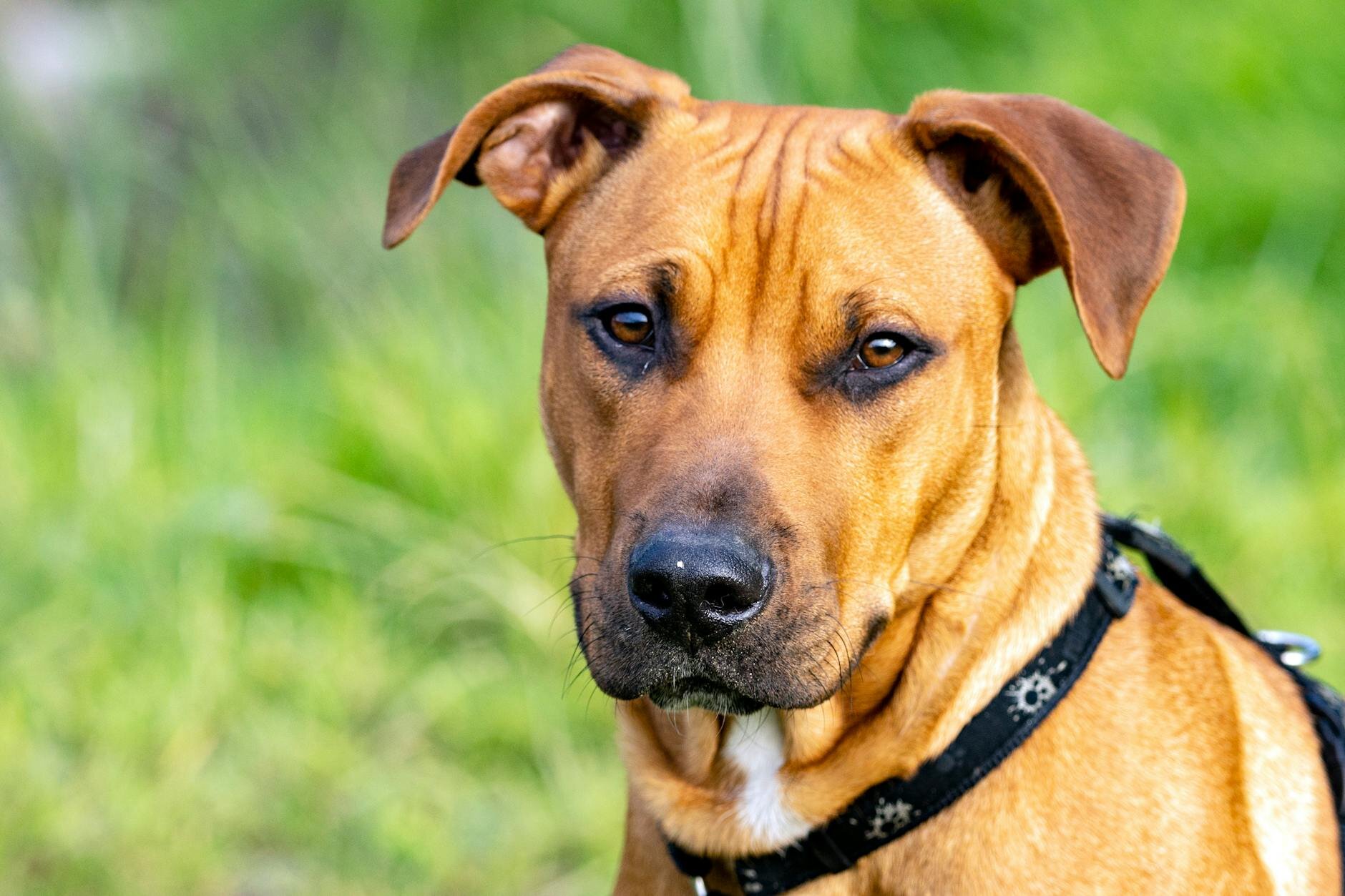Last Updated: 29/07/2025
Training A Reactive Dog
Does your dog lunge and bark at other dogs, people, or cars? This is reactivity, a response often rooted in fear, not aggression. Our comprehensive vet-authored guide explains how to identify triggers, manage situations, and use positive training like desensitisation to build your dog's confidence.
Author: Dr Brittany Ward BVSc
Reading Time: 14 minutes - short read
Has your dog ever lunged at another dog on a walk? Or freaked out at a passing cyclist? Maybe they don't like people in hats? It's possible you have a reactive dog!
Anyone who's ever owned a reactive dog understands how frustrating, and embarrassing, it can be. Don't worry, you aren't alone! Many dogs are reactive. The good news is, there are ways to manage and reduce this behaviour so that your dog can still live their life to the fullest!
What is a Reactive Dog?

Many people assume that a reactive dog is an aggressive dog, but this isn't true. Reactivity is not the same thing as aggression, but it can escalate to aggression in some circumstances.
Reactivity is an over-reaction (often shown as barking and lunging) to a certain stimulus or situation and often originates from a place of fear. Reactive dogs often have specific triggers.
Aggression is hostile and threatening behaviour towards an individual or group. While aggression can be fear based, it is usually the result of an unmet need, such as territorial, possessive, maternal, protective or pain associated aggression. It can be directed at anything that threatens that need.
Reactivity is almost always a fear-based response.
Is Reactivity Breed-Specific?
The short answer is no. Any dog has the potential to become reactive.
Reactivity can be the result of genetics, poor or incorrect socialisation, inadequate training (especially for self-control), a previous bad experience or a combination of these and other factors. A well-known example of reactivity is a dog that lunges at other dogs following a dog attack.
In saying that, there are some breeds that do seem to present with reactivity more frequently. These tend to be working dogs that are now living a pet lifestyle and aren't fulfilling their instincts for work. An example is herding dogs, like An example is herding dogs, like Australian Shepherds and Cattle Dogs who were bred for working livestock, often with few people or dogs around, and may not be getting their energy needs met. Guarding dogs, like German Shepherds, that aren't properly socialised as puppies are another example of prone breeds.
If you would like some tips on how to properly socialise your puppy, check out our article The Importance of Socialisation.
Reading a Reactive Dog's Body Language
When your dog is barking and lunging, they are overstimulated, so will not respond to commands or dog treats. This reactive state is when your dog is the most dangerous. This is often referred to as the Red Stage. The key to reducing reactivity is to intervene before they reach this state.
Signs your dog is calm
If your dog is calm and relaxed, they will have an open mouth, ears in a neutral position, tail usually wagging and eyes are soft or squinting. They will be responsive to commands, happily take treats, sniff things as they pass and should be walking loosely on their lead or dog harness. Trainers call this the Green Stage, and this is the behaviour you want your dog to be exhibiting.
Signs your dog is "loading"
If your dog notices something that they are unsure about, your dog may close their mouth, stand still, stare at the trigger, their ears are up and forward, and their tail is rigid. This is where your dog will start to become less responsive to commands. As a general guide, if your dog's mouth is closed, he is "loading". This means he is assessing a situation and deciding how he should react. This is the Yellow Stage and the time to act. Dogs are starting to feel stressed, but a small amount of stress can be beneficial to training.
Warning behaviour
Once they decide that the trigger is something to be concerned about, their behaviour will escalate to warning behaviour. They will stand stiff with high body tension, will strain at the leash, may curl their lips, growl or let out single 'woofs', stare at the trigger and their tail may be wagging (especially stiffly or while held high). This is the Orange Stage, just before your dog reacts, your dog cannot think or learn in this stage, so leave the situation.
Want to know more? Read through our guide to How to Read Your Dog's Body Language.
Managing A Reactive Dog

How to Train A Reactive Dog

Ask For Help From A Professional Dog Trainer
It can seem very overwhelming when you first start trying to manage and/or train a reactive dog. There is also a lot of information available and a lot of different techniques out there on how to train a reactive dog. A great starting place is with a reputable trainer. Don't be afraid to ask your trainer what their qualifications are and how much experience they have with reactive dogs. It's also ok to change trainers or use advice from multiple trainers to find a training regime that works the best for your dog. You don't have to persist with something that you can see isn't working.
Read our guide to How to Find a Good Dog Trainer for more information.
Solidify Their Basic Obedience
Having your basic obedience down pat, not only at home, but also with practice around distractions is an important step to take before initiating reactivity training. You will use basic obedience training to call your dog away from triggers, command them in desensitisation situations and recall their focus back to you if they are distracted. Commands like "sit", "stay", "come", "leave" and "focus" will become your bread and butter. A dog that is familiar with those commands will be more reliably able to perform them in situations of stress and it will also improve their focus and attention while in stressful situations. You could also try using a trick routine that your dog is well versed in and does consistently in any situation - this is more fun and engaging than basic obedience! Great tricks to use are 'Touch', 'Shake' and 'Spin/Turn'.
Use High Value Rewards
A reactive dog is becoming overstimulated, so what you have in your hand has to be better than whatever they are focusing on. Counter-conditioning involves over-writing a fearful response with something really good! So you need to use something even more high value than your usual training treats. Cooked meat, like chicken or beef, makes great high value treats, as does small pieces of cheese. Otherwise, strongly smelling commercial treats are a great option too. Just remember that the treats you use for this training should only be used for reactivity training because you want your dog to love the treat and you want it to stay a high value dog treat.
Determine Your Dog's Boundary
The boundary is the point when your dog goes from being comfortable around their trigger, to starting to show signs of interest or discomfort. This is the point where you are going to start your training. You want to be just behind this boundary with your dog when you start training. As you train, the aim is to bring the boundary closer to the trigger without your dog reacting.

Desensitisation
Desensitisation involves repeatedly exposing your reactive dog to a trigger at a low level that doesn't trigger a response and rewarding their calm behaviour. It is often good to start in an area your dog is familiar with, and start with them on lead. If your dog reacts to people, ask a friend to help out, or, for dogs, ask a friend to bring their calm dog over.
Start a few steps back from your dog's boundary. Let your dog spot the trigger on their own, but don't let them focus on it or react to it. Walk away and come back past. Every time they spot the trigger but don't react, mark and get their attention back on you. As your dog becomes more comfortable, over time you can reduce the distance between your dog and the trigger. If your dog starts to show signs that they are uncomfortable, go back a couple steps behind their last comfortable spot. Repeating this regularly (ideally daily) for at least 5 to 10 minutes will help build up your dog's confidence and create reliability of calm behaviour. Practising in different locations will also make your dog more likely to display the learned calm behaviour in new or unexpected situations.
Long lines are great for desensitisation training. A short, tense leash can not only make your dog tense, but can also restrict their movement and limit their ability to defend themselves. It also means they can't move away easily if they spot something they are unsure about. You are going to be at a distance from the trigger anyway, so use a long line to allow your dog more comfort and freedom to make decisions.
Examples of Low Level Exposure Situations:
- Sit on your patio or in the front yard on leash
- Sit at the park and watch people and dog pass
- Walk across the street opposite the dog park/train outside the dog park
- Watch the markets from the footpath
- Walk on leash with a familiar person and dog
- Sit in a car park and watch people/cars pass
- Participate in dog sports (lots of dogs and people in one location but focusing on working or in crates)
Counter-Conditioning
Counter conditioning is the action of pairing a frightening experience with something rewarding to overwrite the fear response with happiness and eventually teaching your dog an alternative behaviour. When it comes to reactivity training, this often involves pairing rewards and other dog training aids (treats, praise, pets) with desensitisation training. While exposing your dog to their trigger at a low level, provide rewards for their calm behaviour. Initially, this may involve offering your dog rewards as soon as they notice the trigger before they have a chance to react. As they remain calm for longer periods of time, you can decrease the frequency of treats.
You will also want to watch for and train alternative 'good' behaviours. If your dog naturally looks back at you for reassurance, that's perfect! Mark and reward that behaviour. However, not all dogs will do this straight away. In these cases, you may need to try to elicit this behaviour in your dog with commands. Use familiar commands, like 'Look', 'Sit' or 'Drop' to teach your dog what they should be doing when they see a trigger. This is where your learned trick routine could come in handy!
Be Patient
Training a reactive dog is not a quick fix or an easy task. Many dogs will never be 100% comfortable around their triggers. Some days will be diamonds, others will be a disaster, but you just have to keep working with your dog and focusing on their needs at the time. Sometimes a good situation can quickly turn bad, in which case, you just need to leave and try again another day. It may take months to years to really see the fruits of your labour - and when you finally do, it's the most rewarding feeling!
The journey with a reactive dog is a marathon, not a sprint, and you are their most important guide. By learning to read their body language, advocating for their space, and committing to consistent, positive training, you build the trust they need to feel secure in the world. Remember that progress, not perfection, is the goal, and your patience is the key to helping your dog live a calmer, happier life.
References
Spirit Dog Training - https://spiritdogtraining.com/reactive-dog-training
Jordan Dog Training - https://jordandogtraining.com.au/reactive-dogs
Whole Dog Journal - https://www.whole-dog-journal.com/behavior/causes-of-reactive-dog-behavior-and-how-to-train-accordingly
Positive K9 Training - https://www.positivek9training.com.au/what-you-should-know-about-your-reactive-dog
K9 of Mine - https://www.k9ofmine.com/reactive-dog-training
Positively - https://positively.com/dog-training/understanding-dogs/canine-body-language
Shy and Fearful Dogs - https://shyandfearfuldogs.com/4-ways-to-advocate-for-your-shy-and-fearful-dogs
Further Reading
Want to read more? Check out our other articles:
Complete Beginner's Guide To Puppy Care
History
Our experts continually monitor the health and wellness space and we update our articles when new information becomes available.
Fri 6 Jan 2023
Written by Dr Brittany Ward BVScDr Brittany Ward BVSc
Veterinarian
Dr. Brittany graduated from James Cook University in 2019 with a Bachelor of Veterinary Science and started working in her home town in the Wide Bay-Burnett Region. She has always been excited about working in the veterinary industry, but over the last few years has grown especially fond of dog behaviour and training, surgery and orthopaedic disease.

